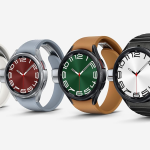ADRIAN DENNIS/AFP/Getty Images
- Nose swabs for rapid COVID-19 tests didn’t pick up Omicron in the early stage of infection, a small study found.
- The study, which isn’t published, suggests that with Omicron, virus particles peak faster in the throat than in the nose.
- Experts don’t agree on whether you should always swab your throat as well as your nose.
Rapid COVID-19 tests that use nose swabs alone might not pick up Omicron in the early days of infection, a new study suggests — but experts don’t agree on whether you should also swab your throat.
A small study from a group of US researchers, published Tuesday, found that rapid tests with nasal swabs didn’t detect Omicron for one to two days after initial infection, which was confirmed with a lab test using a throat swab. Four participants spread infection before their rapid tests showed as positive, the researchers said.
The study, which hasn’t yet been published in a medical journal or scrutinized by other scientists in a peer review, adds to emerging evidence that for rapid tests, throat and nose swabs together might detect Omicron better than nose swabs alone.
However, the US Food and Drug Administration (FDA) said in a statement Tuesday that rapid tests should be used as per their instructions, citing safety concerns about self-collection of throat swabs, which were “more complicated” than nasal swabs. Throat swabs can be collected by a trained healthcare provider, as per Centers for Disease Control and Prevention guidance, the FDA said.
The study involved 30 participants from five workplaces in New York, Los Angeles, and San Francisco. All participants were fully-vaccinated and had received a booster dose, and 28 of them had Omicron, the study authors said.
In a sub-group of five participants, virus particles in saliva were found to have peaked one to two days before they were detected by a nasal rapid test, the researchers said.
Dr. Michael Mina, a former associate professor of epidemiology at the Harvard T. H. Chan School of Public Health, said of the findings: “Numerous reports show saliva comes up earlier and with Omicron there have been MANY anecdotes that throat swabs (which interact with saliva!) are turning positive BEFORE nasal swabs.”
Mina has previously advocated testing both nose and throat for a rapid test, regardless of the test instructions — a view advocated by others, if not by the FDA.
In the UK, some rapid tests tell users to swab both nose and throat.
Dr. Peter M B English, a recently-retired consultant in communicable disease control, said on Twitter Thursday that the study findings were “further confirmation that nose swabs alone do not effectively detect the Omicron variant. Test kit instructions which do not include throat swabs should be amended immediately.”
Dan Lorremore, an assistant professor in the Department of Computer Science and the BioFrontiers Institute, said on Twitter Wednesday that a rapid test using saliva could “potentially” outperform a nasal rapid test, but it wasn’t clear from the data available how much earlier it would be able to detect it.
Roy Gulick, chief of the infectious diseases division of New York-Presbyterian/Weill Cornell Medical Center, told Today on Wednesday that he couldn’t recommend people using throat swabs. “It’s just not the way the tests have been authorized,” he said. “Please don’t take matters into your own hands. We need to wait to see if any of these tests will be valid to do a throat swab as well.”
Gulick said that if an at-home rapid test is positive, then “believe it”. If it’s negative and you have COVID-19 symptoms or been exposed to someone with COVID-19, then you should get a lab test, he said.
A preliminary study from South Africa posted December 24 showed using throat swabs for lab tests detected all Omicron infections but only 71% of Delta infections, while nose swabs caught 100% of Delta infections but only 86% of Omicron infections.
Powered by WPeMatico






